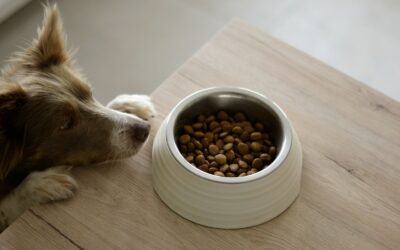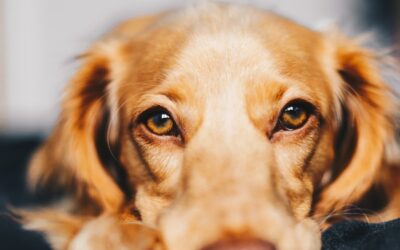Imagine you’re playing with your dog, and suddenly, they start making a loud snorting sound. This is known as reverse sneezing in dogs, which can catch many pet owners by surprise.
Unlike regular sneezing, where air is forced out through the nose, reverse sneezing pulls air into the dog’s nose, creating a distinctive sound. It is a common phenomenon in dogs that often worries their owners.
Most dogs will experience a reverse sneezing episode at some point in their lives. These episodes can last for a few seconds and may cause your dog to appear distressed.
Although it sounds alarming, reverse sneezing is generally a harmless occurrence. Understanding what reverse sneezing is and why it happens can help you remain calm and assist your pet effectively.

Common Causes of Reverse Sneezing
Reverse sneezing in dogs can be triggered by various factors, often related to the nasal passages and throat. One of the most common causes is irritation to the nasal cavity.
This can be due to allergens such as pollen, dust, or strong odors. Dogs with sensitive nasal passages may be more prone to reverse sneezing episodes after exposure to these irritants.
Certain breeds, particularly brachycephalic breeds like Bulldogs and Pugs, are more susceptible to reverse sneezing due to their elongated soft palates. The structure of their nasal passages makes them more likely to experience these episodes. Additionally, small dogs with narrow airways may also exhibit reverse sneezing more frequently.
Physical factors such as excitement, pulling on the leash, or sudden temperature changes can also lead to reverse sneezing. Sometimes, foreign bodies like grass seeds can get lodged in the nasal passages, causing irritation and triggering reverse sneezing. Recognizing the potential causes can help in reducing the frequency of episodes.

Understanding the Symptoms
During a reverse sneezing episode, dogs typically exhibit a series of rapid, loud snorting sounds. Their posture may become rigid, and they might extend their necks and open their mouths. This behavior can be concerning for pet owners, especially if they are witnessing it for the first time.
It’s important to differentiate between a dogs reverse sneeze and other respiratory issues. While reverse sneezing is common and not harmful, conditions like tracheal collapse or heart disease require medical attention. If your dog shows signs of distress beyond the episode, such as ongoing coughing or nasal discharge, consult a veterinarian for a proper diagnosis.
Most episodes of reverse sneezing resolve themselves without intervention. However, if episodes occur frequently or last longer than usual, it’s wise to seek veterinary advice. Diagnostic tests may be necessary to rule out underlying causes that require treatment.
How to Stop a Reverse Sneezing Episode
When your dog reverse sneezes, there are a few simple techniques you can try to help them. Gently massaging your dog’s throat can sometimes stop the episode by stimulating the nerves and muscles involved. You can also try lightly blowing on your dog’s face to encourage swallowing, which can clear any irritants from the throat.
Another method is to gently cover your dog’s nostrils for a moment. This action forces them to breathe through their mouth and swallow, which often ends the episode. Always be gentle and calm when helping your dog; sudden movements or panic can exacerbate the situation.
In some cases, providing a small amount of water for your dog to drink can help soothe their throat and stop the sneezing. However, if the episodes persist, or if you notice any signs of difficulty breathing, it’s crucial to consult your vet for further evaluation.

When to Seek Veterinary Help For Reverse Dog Sneezing
While reverse sneezing is typically harmless, there are situations where veterinary intervention is necessary. If your dog begins to have frequent, prolonged episodes of reverse sneezing, or if the episodes are accompanied by other symptoms like nasal discharge or coughing, it’s time to visit the vet.
Dogs with underlying conditions such as nasal mites or respiratory infections may require medical treatment. Your vet will conduct a physical examination and may recommend diagnostic tests to determine the exact cause. In rare instances, medication may be needed to manage the condition.
It’s also important to consult a vet if your dog experiences reverse sneezing for the first time, especially if they belong to a brachycephalic breed. Early assessment helps rule out serious conditions and ensures your pet’s health and comfort.

Prevention Strategies for Pet Owners
Preventing reverse sneezing episodes involves minimizing potential triggers in your dog’s environment. Regular grooming and cleaning can help reduce exposure to allergens like dust and pollen. Ensure that your dog’s living area is well-ventilated to prevent the accumulation of irritants.
For dogs prone to reverse sneezing, consider using a harness instead of a collar to avoid pressure on their throat during walks. This can help reduce the frequency of episodes caused by excitement or pulling on the leash.
If you suspect that specific allergens or irritants are causing your dog’s reverse sneezing, try to identify and eliminate them. This might involve changing cleaning products, avoiding smoking near your dog, or using air purifiers in your home.

Dispelling Myths About Your Dog Reverse Sneezing
There are several myths surrounding a reverse sneeze that can cause unnecessary worry for pet owners. One common misconception is that reverse sneezing signifies a serious health problem. While it can be linked to certain conditions, most reverse sneezing episodes are benign.
Another myth is that reverse sneezing is a form of choking. Although the sounds produced can resemble choking, reverse sneezing does not obstruct your dog’s airway. It’s a reflex action that clears irritants from the nasal passages.
Understanding the true nature of reverse sneezing helps pet owners respond appropriately and reduces stress for both the dog and the owner. Knowledge is key to ensuring your pet’s well-being.
The Role of the Soft Palate in Reverse Sneezing
The soft palate plays a significant role in reverse sneezing. It is the fleshy area at the back of the roof of the mouth that separates the nasal passage from the oral cavity. When the soft palate becomes irritated, it can trigger reverse sneezing as the body attempts to clear the irritation.
Brachycephalic breeds, in particular, have an elongated soft palate, which can lead to more frequent episodes of reverse sneezing. Understanding the anatomy of your dog’s oral and nasal passages can help you better manage and prevent these episodes.
If you notice that your dog has recurring issues related to the soft palate, it’s advisable to consult with a vet who can provide guidance and, if necessary, medical intervention to address the issue.
Differentiating Between Sneezing Types
Being able to distinguish between regular sneezing and reverse sneezing is crucial for effective management. Regular sneezing is an outward expulsion of air, often in response to an irritant in the nasal passages. It’s usually a quick, sharp sound.
In contrast, reverse sneezing involves a series of inward snorts that can last several seconds. Both types of sneezing serve to clear irritants from the nasal passages, but they occur differently and have distinct sounds.
Understanding these differences helps pet owners recognize when their dog is experiencing a typical sneeze versus a reverse sneezing episode, allowing for more accurate responses and care.

Signs to Be Worried About Regarding Reverse Sneezing in Dogs
While reverse sneezing is generally a benign reflex, certain signs may indicate that it warrants further concern. Pet owners should be vigilant if their dog experiences prolonged episodes lasting more than a few minutes, as this could signify an underlying issue.
Additionally, take note if reverse sneezing is accompanied by symptoms such as nasal discharge, gagging, or difficulty breathing, as these could indicate a respiratory infection or an obstruction in the airway.
Another alarming sign is if the reverse sneezing occurs frequently or becomes more severe over time, which might indicate an underlying condition, such as allergies or anatomical abnormalities.
Furthermore, watch for any signs of distress or discomfort during episodes, including pawing at the face, lethargy, or loss of appetite. If any of these concerning signs are present, it’s essential to consult with a veterinarian promptly for a thorough evaluation and appropriate care.
The Importance of Early Detection
Early detection of patterns or changes in your dog’s health can make a significant difference in their quality of life. Monitoring the frequency and duration of reverse sneezing episodes is an essential part of responsible pet ownership.
Keeping a record of episodes and noting any accompanying symptoms can provide valuable information to your veterinarian. This can lead to faster and more effective diagnosis and treatment if needed.
Being proactive about your pet’s health ensures that they remain happy and healthy, and it allows you to address any concerns promptly.

Conclusion
Reverse sneezing in dogs is a common and often harmless occurrence, yet it can be concerning for pet owners witnessing it for the first time.
By understanding the causes, symptoms, and management strategies, you can ensure the well-being of your furry friend.
Remember that while most episodes are nothing to worry about, persistent or severe cases should be evaluated by a veterinarian. Stay informed, observe your pet carefully, and don’t hesitate to seek professional advice when needed.
For further resources and expert advice, consider joining online pet communities or speaking directly with veterinary professionals to stay updated on the best practices for managing reverse sneezing and other pet health issues.
You and your fur baby should reverse sneeze your way to Snouts and Stouts Indoor Dog Park and Bar!




